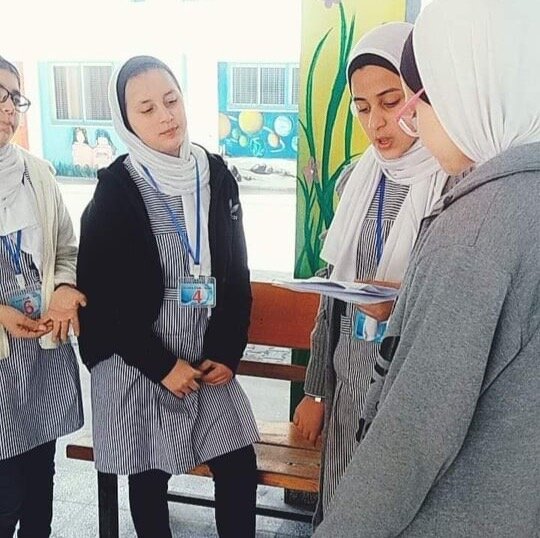From individual story to collaborative play: the rich stages of learning in Haneen Jadalla's framework for creating remote plays.
Haneen Jadalla runs one of the most prolific and well-respected remote theatre clubs in Gaza, and has also developed her own framework for creating remote plays with her learners. Here are the stages she uses which you may like to adapt for your own context.
Stage 1 Writing stories. On a topic of their choosing, students write their own short stories as a kind of homework preparation for the session.
Stage 2. Choosing one story. Working in groups of 5-6, with an assigned group leader, the students share their stories with each other, discussing and finally agreeing on one story which they will convert into a remote play. This stage is excellent for developing the skill of evaluating each other's work and providing constructive yet sensitive feedback to each other.
An extract from the original student story "Oh my home' that was chosen to be converted into a play. This story was inspired by the tragic case of the 3 year old Syrian boy, Aylan Kurdi, whose body was found washed up on Turkish beach in September 2015.
Stage 3. Making story posters. The students then create a picture story poster for the planned scenes of the play. When they are ready, they present this to the rest of the class. The rest of the class is invited to comment and provide feedback.
Stage 4. Writing the script. The students are provided with a model so that they can see the features of scripts (stage directions, natural spoken language etc.) They then start looking at their own stories and posters and write a first draft of the script as a group. Since everyone in the group knows that they will all eventually be involved in the final performance of the remote play, everyone is keen to make the lines seem as natural and as accurate as possible. Therefore there is lots of very useful debate about sentence structure and vocabulary choice here - and plenty of peer teaching.
One group's first draft of the script for 'Oh my home'
Stage 5. Reformulation. Each group leader hands their final script to the teacher at the end of this session. The teacher then rewrites it, keeping the distinct voice of the learners as much as possible, but reformulating it in terms of grammatical accuracy, vocabulary, spelling etc. The edited scripts are then given back to the groups (without the original one initially) and the students are asked to underline any part that they think is different from how they had originally expressed it. They should try to discuss as a group how they feel it is different and what their original utterance was. Lots of learning happens here as the students notice more advanced ways of expressing their own ideas. Only when they've exhausted their ideas, should their original scripts be returned to them for comparison.
Stage 6. Physicalization and Rehearsal. Each group leader establishes a timetable of training sessions with the other group members. This leader gives each member a role in the play (including herself) and they start to rehearse the lines. They do this on their own first, then the teacher comes in to give her own feedback for improvement. It's advisable to make students aware early on of the limitations and the opportunities for creative output which are defined by the use of the camera. For this reason it may be useful if one student is watching the rehearsal through the camera of her mobile phone, and providing feedback.
Rehearsing with the script
7. Performing the plays remotely: After a lot of hard work, the plays have to see the light! Haneen linked her students through zoom to the British playwright Peter Oswald for him to see their remote play, and to provide each group with feedback on the script and on their performance. This discussion is as important and useful as the actual performance. The students then take the feedback into account, and they go back to their training sessions to make any necessary modifications. The play can then be performed remotely again later to a different audience in its new format.
Performing remotely and getting feedback
An extract of the final version of 'Oh my home!'
Scene 1: A girl who acts out the role of the sea and holds a baby coat to narrate the whole story.
Girl 1 (The Sea): I am that part of nature that always gives you peace of mind. You can sit near my beach and look at the sun when it sets. I have this pearl blue colour mixing with the sky. And I have always been a symbol of love and a source of life. (A flashback moment) But now, shall I be a source of death for this man, his child and wife?! And the baby! The baby drowned . . yet I can hear her. I can hear what her soul wants to tell me. Her soul wants to tell me that one day.... (here the girl stops and puts her hand to her ear and approaches the camera; the voice of a little girl interrupts and continues telling the story)




